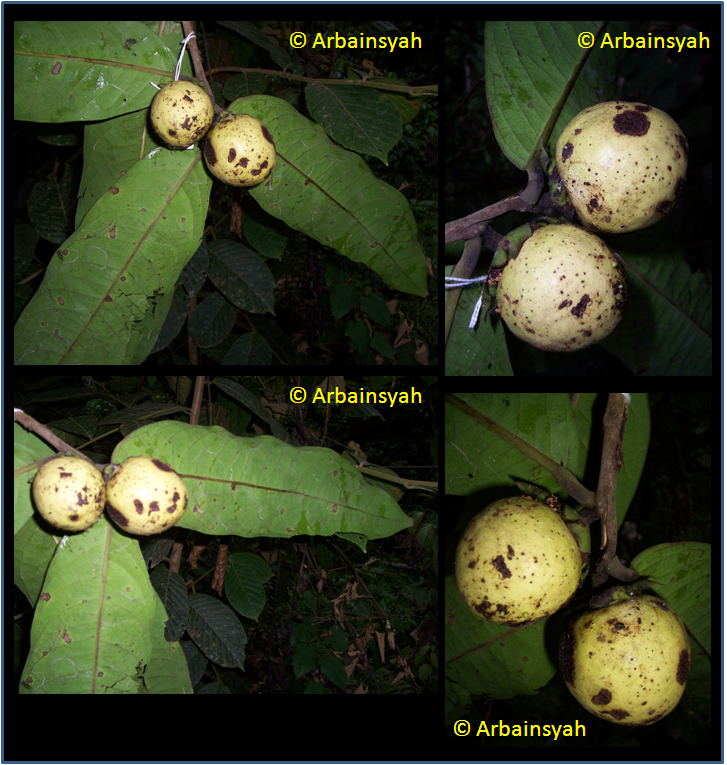Diospyros mindanaensis Merr. Philipp. J. Sci., C 4: 309 (1909)
Named after the Philippine island of Mindanao.Synonyms
Diospyros endertii Bakh.
Diospyros rosenbluthii Elmer
Diagnostics
A medium-sized tree up to 27 m tall, bole branches for up to 8 m, up to 60 cm in diameter, bark surface rough, inner bark reddish.
Leaves elliptical-oblong to oblong-lanceolate, 7-37.5 cm x 2.5-11 cm, base obtuse to rounded, apex obtuse to acuminate, glabrous,
tertiary venation reticulate, slightly prominent on both surfaces or sometimes distinctly prominent below; male flowers in 3-flowered
chymes, 4-merous, stamens about 28; female flowers in 1-3(-5)flowered chymes, 4-merous; fruit globose to depressed globose,
3-8 cm x 4-9 cm, glabrous.
Description
Tree to 27 m tall and 60 cm diameter. Twigs glabrous, sparsely lenticellate, rugose, drying blackish.
Leaves chartaceous to coriaceous, not bullate between veins, glabrous, upper surface dull, lower surface
not subglaucous; oblong, 8.5-37 x 3.5-10 cm, base cuneate, rounded or subcordate, margin not undulate,
apex acuminate; midrib variably sunken, flat or prominent above; lateral veins prominent below, 5-14
pairs, diminishing toward leaf margin; intercostal venation prominulous above and below, reticulate;
petiole 0.7-3 cm long. Male inflorescences 1.3-3.5 cm long, each bearing 3 or more flowers, sometimes
appearing as a large pseudo-panicle formed by the suppression of leaves on the flower-bearing shoots.
Male flowers with calyx cup-shaped, with the opening truncate or shallowly 4-5 toothed; corolla urceolate.
Female inflorescences 0.3-3.5 cm long, each bearing 1-3 flowers. Female flowers with calyx divided into
4-5 valvate lobes, sharply reflexed at a position halfway up the tube, reflexed part spreading
horizontally or bent backwards. Fruits usually solitary, on 0.3-3.5 cm long stalks, globose, depressed
globose or ovoid-globose, to c. 7.5 cm diameter, symmetric, not ribbed, woody thick-walled, glabrous.
Fruit calyx 1.5-2.5 x 3-5 cm, erect to reflexed, with the base of calyx tube greatly thickened or
not, not distinctly cup-shaped; lobes greatly expanded or not, coriaceous to hard and brittle,
veins very faint or invisible. [from Tree Flora of Sabah and Sarawak]
Ecology
Found in primary lowland to montane forest, up to 1700 m altitude.
Uses
Wood: black ebony and white wood. The heartwood is used as black ebony, the sapwood as white ebony, e.g.
for temporary or light construction and handles of agricultural instruments (from PROSEA).
Distribution
Philippines and Borneo.
Local names
Ata ata (Philippines), Bantolinao (Philippines), East Indian ebony (English wood trade name),
Malagait (Philippines).
